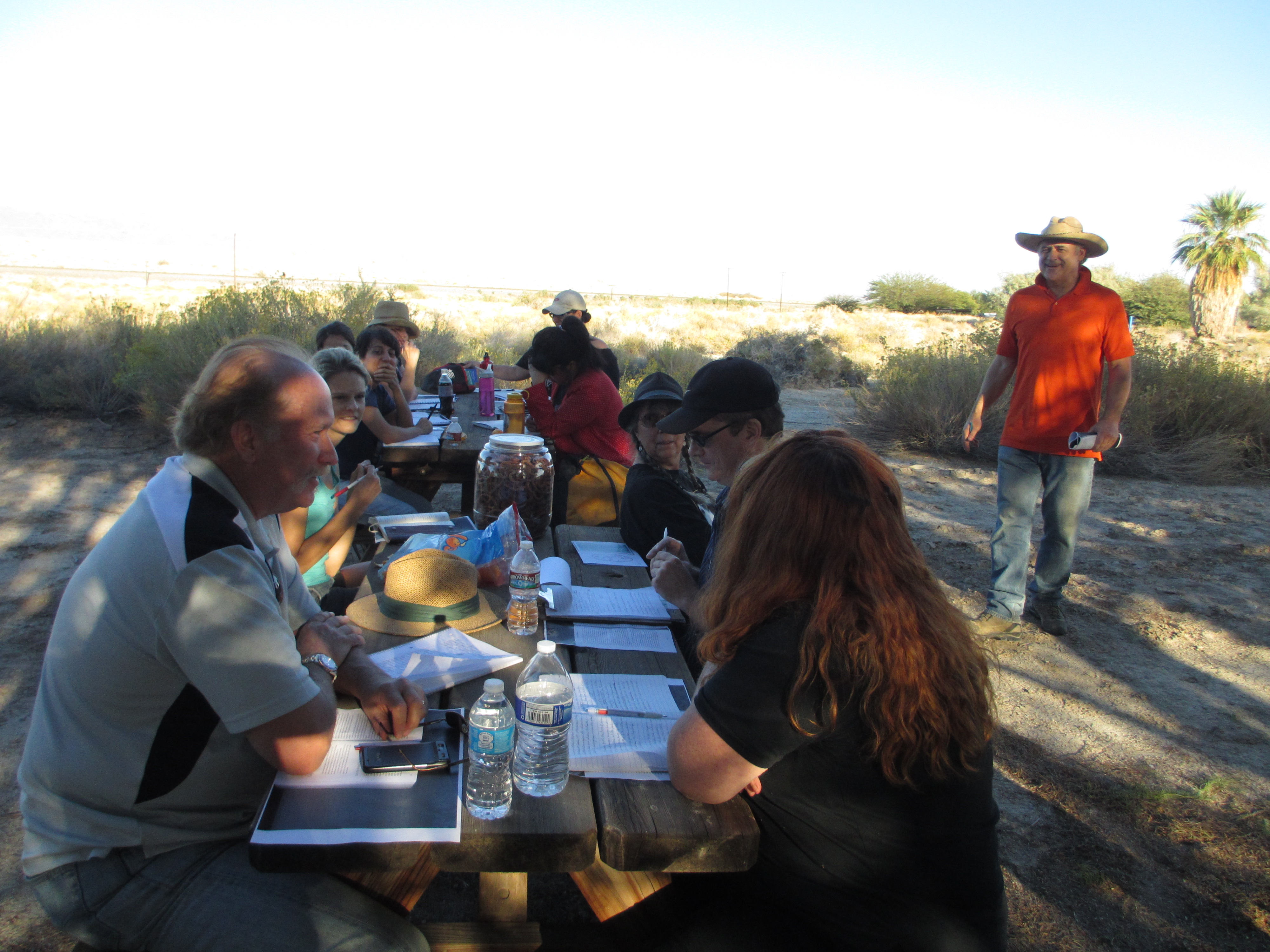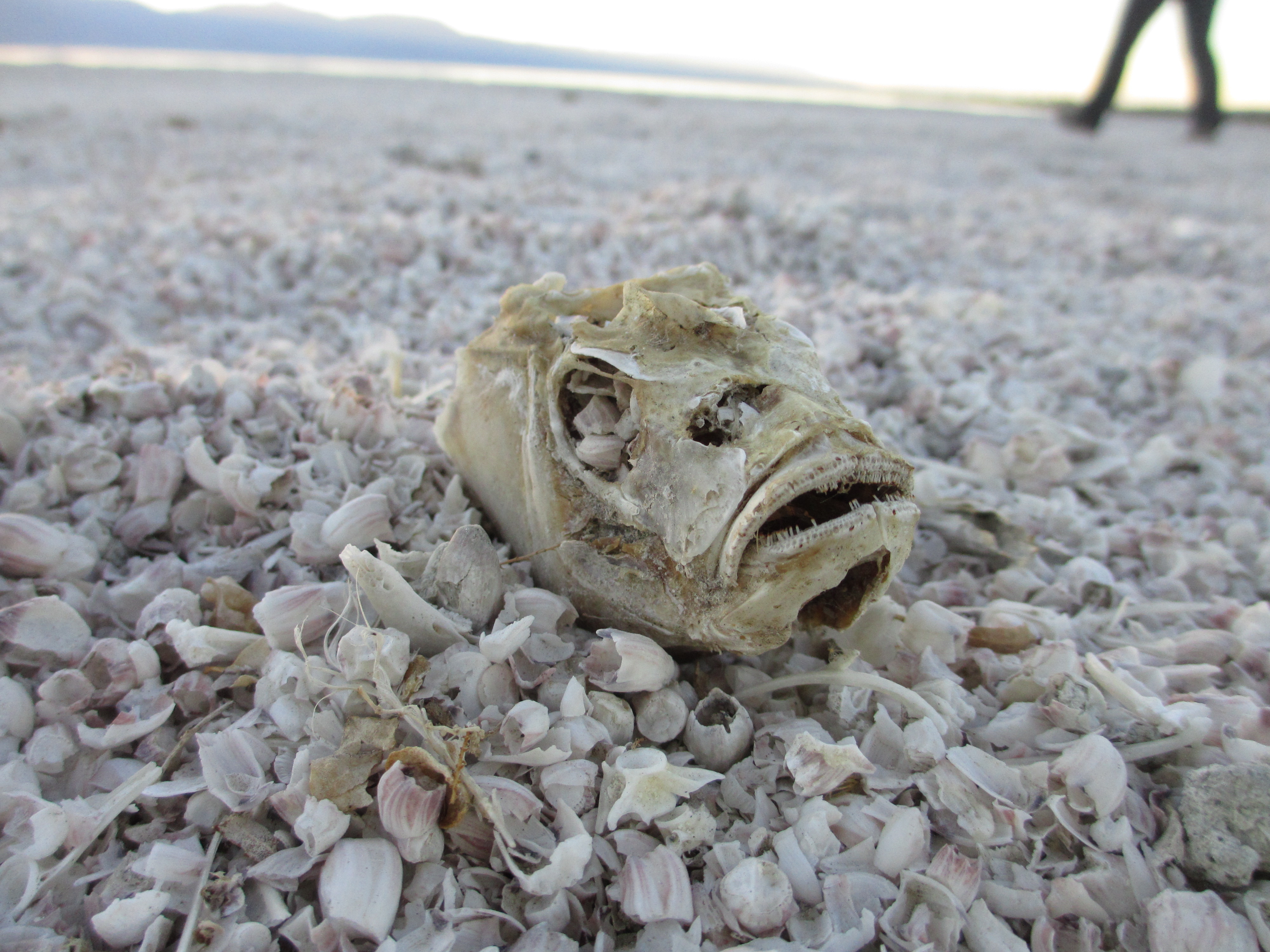In November, P&W and the Inlandia Institute co-sponsored a day of workshops and readings at California’s Salton Sea, led by Sandra Alcosser, Maureen Alsop, Brandon Cesmat, and Ruth Nolan. P&W’s California office director Cheryl Klein blogs about the event. The shores of California’s Salton Sea—a vast lake created when the Colorado River flooded salt mines in the Imperial Valley a hundred years ago—are littered with fish carcasses. Small as a child’s fist or large as a dinner plate, still shimmering with scales or dried to Halloweenish skeletons by the desert sun, they are a reminder of how delicate ecosystems are. The Salton Sea was a thriving resort community in the 1950s and ‘60s, but because it lacks a natural outlet, fertilizer runoff from nearby farms makes the water increasingly inhospitable.
The shores of California’s Salton Sea—a vast lake created when the Colorado River flooded salt mines in the Imperial Valley a hundred years ago—are littered with fish carcasses. Small as a child’s fist or large as a dinner plate, still shimmering with scales or dried to Halloweenish skeletons by the desert sun, they are a reminder of how delicate ecosystems are. The Salton Sea was a thriving resort community in the 1950s and ‘60s, but because it lacks a natural outlet, fertilizer runoff from nearby farms makes the water increasingly inhospitable.
The future of the Salton Sea is the subject of much debate, but it’s fair to say that on November 2—the Day of the Dead—the Salton Sea State Recreation Area was incredibly fertile, at least from a creative standpoint. Four writers with a passion for the desert—Sandra Alcosser, Maureen Alsop, Brandon Cesmat, and Ruth Nolan—gathered with roughly two dozen participants for a day of writing, reading, and camping. It all began when Brandi M. Spaethe, an intern in P&W’s California office, took a road trip and fell in love with the odd, harsh beauty of the Salton Sea. She began wondering if other writers would be similarly inspired, and if locals might benefit from a literary event in an area that was hardly on many publishers’ book tours. She teamed up with Nolan, editor of the desert anthology No Place for a Puritan, from Heyday Books, and the Riverside-based Inlandia Institute. Sal y Muerte was born.
It all began when Brandi M. Spaethe, an intern in P&W’s California office, took a road trip and fell in love with the odd, harsh beauty of the Salton Sea. She began wondering if other writers would be similarly inspired, and if locals might benefit from a literary event in an area that was hardly on many publishers’ book tours. She teamed up with Nolan, editor of the desert anthology No Place for a Puritan, from Heyday Books, and the Riverside-based Inlandia Institute. Sal y Muerte was born.
Nolan started the day with a quick tour of the grounds and visitors’ center, where participants learned about the lake’s history, dating back to the time when the indigenous Cahuilla made arrow weed huts in the basin. The group broke into two camps, poetry and prose, each co-taught by a pair of writers. In the prose workshop, Cesmat asked participants to use terms like “Pleistocene damn” and “step-over fault” in unpredictable ways as part of a “scaffolding” exercise. In the poetry workshop, Alcosser encouraged her students to consider the mysteries linked to the place and day.
As the sun turned the valley pink-gold, attendees clamored to explore the lake before dark. They took photos of the rotting tilapia and crunched bits of shell and bone—which look like sand only from a distance—beneath their feet.
The group reconvened around a campfire (the more outdoors-savvy among them had thought to bring wood and matches) and feasted on strawberries, sandwich rolls, musubi, and pan de muerto. Each of the featured writers took turns donning one participant’s headlamp and reading his or her work (except for Alcosser, who’d memorized several poems). Participants shared work too; three young students from the tiny nearby town of Mecca impressed the thirty-and-over crowd with their love of spoken word. But the evening didn’t feel like a featured poet/open mic formula so much as old-style entertainment: people gathered around a fire, exchanging words and rhythm.
Photos: Top: Brandon Cesmat (right, standing) leads the prose workshop. Bottom: a tilapia head on the salton seashore. Credit: Cheryl Klein.
Major support for Readings/Workshops in California is provided by the James Irvine Foundation. Additional support comes from the Friends of Poets & Writers.






